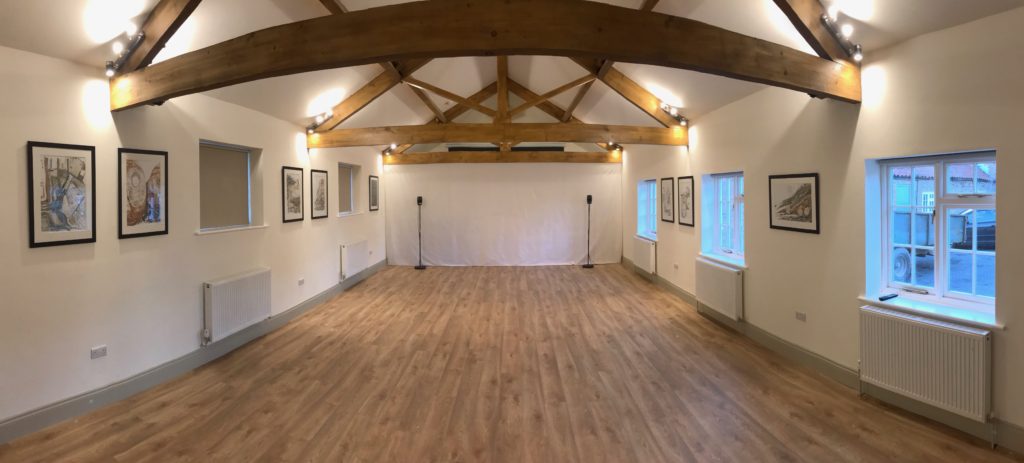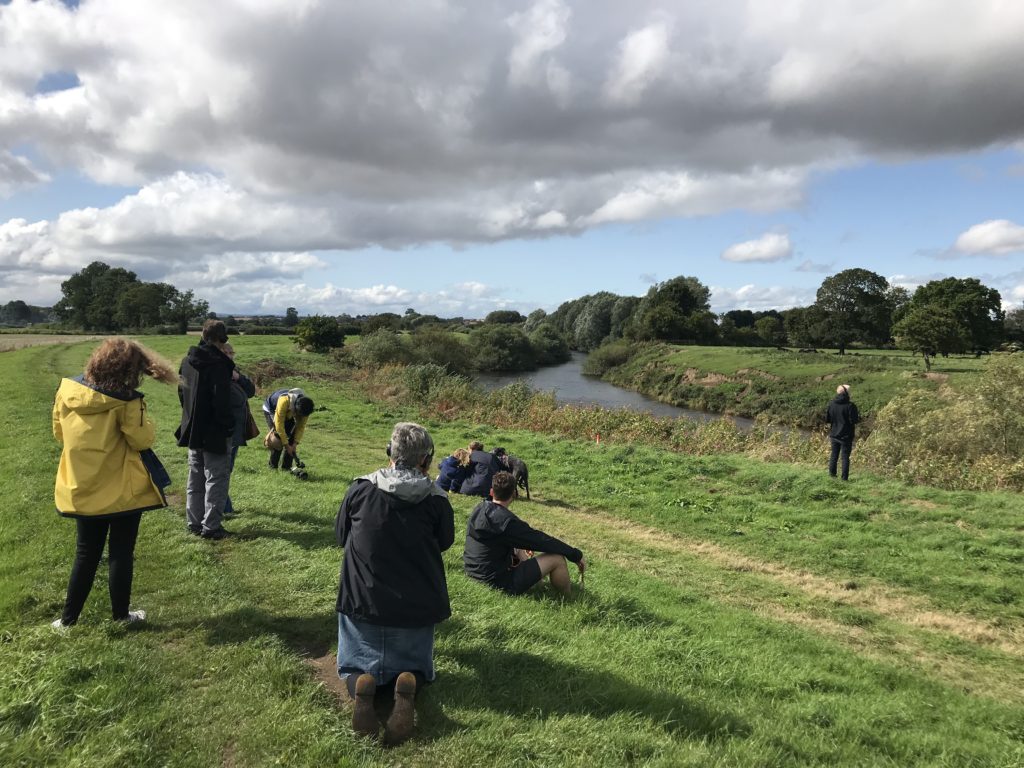Exhibition

Last week saw the first Soundmarks exhibition go up at The Shed in Aldborough. Eight paintings held the wall, whilst Rob’s ethereal, evocative sound piece filled the light space. We planned it all months ago, and it seemed odd that it was finally crisp and clean, finished. This is one of the best bits of making work: allowing people to come in, and take from it what they will, understand it from their own perspective. It is also the most nerve-wracking part for the very same reason – something we’ve held close and dear, beavering away on for months, finally let out into the world to become its own, evolving thing.
One of the most interesting parts of exhibiting site-specific work like this are the conversations it begins. Sitting in on the exhibition this week, we’ve heard from people about what excites them about archaeology, exhibitions they’ve seen elsewhere, the way they see or hear it, which bits they particularly like. I love watching people’s heads pick up as they tune into the sound, becoming absorbed in the deep calm of Rob’s sound piece. Some visitors sit for the good part of an hour, just listening; eyes sliding over the paintings, or resting closed, absorbed. We hoped that the work would encourage imaginings of the sub-surface, perhaps allowing it to become part of a kind of peripheral vision out in the landscape, hovering on the edge.
One of the things that came to light in all this – and one of the aspects that fascinated and enlivened people most – was the description of the ways in which we had made the work. The paintings seemed to take on another level of interest when we talked though the layerings and resistance of oil pastel and guache. And when we recalled the places we had tucked microphones for Rob’s recordings – the cracks of the quarry, the deep earthy breath of the bore hole – or how we clipped them to plants and creaky gates, the sounds in the gallery took on renewed interest; ears pricked for familiar sounds or identifiable sonic marks. Creative process remains interesting and important long beyond the making.

The exhibition coincided with the launch of the art trail, as our artworks became portable through mobile devices, so that the eight ‘soundmarks‘ could be absorbed in situ. Small gatherings of people formed around the village – by the stocks on the green, on a verge by the church, on a flood defence bank overlooking the late summer stubble of the flood plain – donning headphones, each sinking in their imagination into the sub-surface layerings below. Here, time was stretched and condensed in Rob’s sound pieces, small fragments of materials scored and arranged to create ideas of past spaces, atmospheres, bulk or voids.
People looked out over the landscape, then at phones to see the painting; glance up to the greenery of the real world, and down, down, into an abstracted underbelly. Someone told us that they’d become lost when listening, and felt almost wrenched back into reality at the end of each piece. And that’s the magic of creating these sub-surface searchings: they are not fixed, or homogeneous. Rather, they allow each person to discover for themselves their very own imagined underground, a way of thinking about that place that only they know.
We took the exhibition down on Sunday, after a finale seminar with Lesley McFadyen and Jos Smith (more on this later!). The work reduced down into the boot of the car, ready for its next install. It’s going to be exciting to see how the work is received away from the site itself – how far can our imaginations of the sub-surface extend?
